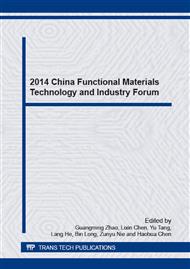p.213
p.218
p.222
p.231
p.237
p.243
p.248
p.252
p.258
Preparation and Characteristic of Different Hollow Microspheres Filled Syntactic Foams
Abstract:
In this study, hollow glass microspheres (HGM) and hollow polystyrene microspheres (HPSM) have been employed as fillers in epoxy resin to prepare the syntactic foam. A kind of good performance composite was prepared. The effects of presence of various hollow microspheres on the impact and compressive properties of syntactic foams are studied. Weight fraction of HPSM and HGM for the syntactic foams varies up to 2.0 wt% and 25 wt%, respectively. The results show that the coupling agent can induce the interfacial adhesion between the HGM and the resin and help HGM uniformly disperse in the resin and hence result in better mechanical properties of composite. On the other hand, the effect of HPSM for the composite density is greater than that of HGM. The addition of a small percentage of HPSM helps produce an important improvement in the low density of syntactic foam. The syntactic foam has uniform stability component and the excellent integrative performances. Fabricated syntactic foams had compression strength of 51.96 MPa and density of 0.671 g/cm3.
Info:
Periodical:
Pages:
237-242
Citation:
Online since:
December 2014
Authors:
Price:
Сopyright:
© 2015 Trans Tech Publications Ltd. All Rights Reserved
Share:
Citation:


